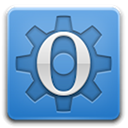Top DMDX Alternative Software for Psychological Research
DMDX, a Win32-based display system, has long been a staple in psychological laboratories for its precise measurement of reaction times to visual and auditory stimuli. Programmed by Jonathan Forster, DMDX leverages DirectX for accurate timing, which is crucial for reliable research data. However, as technology evolves and research needs diversify, many are seeking a robust DMDX alternative that offers more flexibility, cross-platform compatibility, or modern features. This article explores some of the best replacements available today.
Top DMDX Alternatives
Whether you're looking for open-source solutions, cross-platform compatibility, or a graphical interface for easier experiment building, these alternatives offer compelling reasons to consider them for your next research project.

PsychoPy
PsychoPy is an excellent open-source DMDX alternative, written in Python, designed for generating neuroscience and experimental psychology experiments. It's available for Free, Open Source, Mac, Windows, and Linux, making it a highly versatile choice for researchers seeking cross-platform solutions.

OpenSesame
OpenSesame is a graphical, open-source experiment builder tailored for the social sciences, presenting a modern and intuitive user interface for constructing complex experiments. As a free and open-source DMDX alternative, it's available across multiple platforms including Mac, Windows, Linux, Android, and Android Tablet, and is extensible through plugins and extensions.

SuperLab
SuperLab 4 is a commercial stimulus presentation software available for Mac OS X and Windows. While not open-source, SuperLab has been in development for many years, offering a robust and refined experience for researchers who need a dedicated, polished solution for their experimental setups.
Each of these DMDX alternative programs offers unique strengths, from open-source flexibility and cross-platform compatibility to intuitive graphical interfaces. We encourage you to explore them based on your specific research requirements, operating system preferences, and budget to find the best fit for your laboratory.